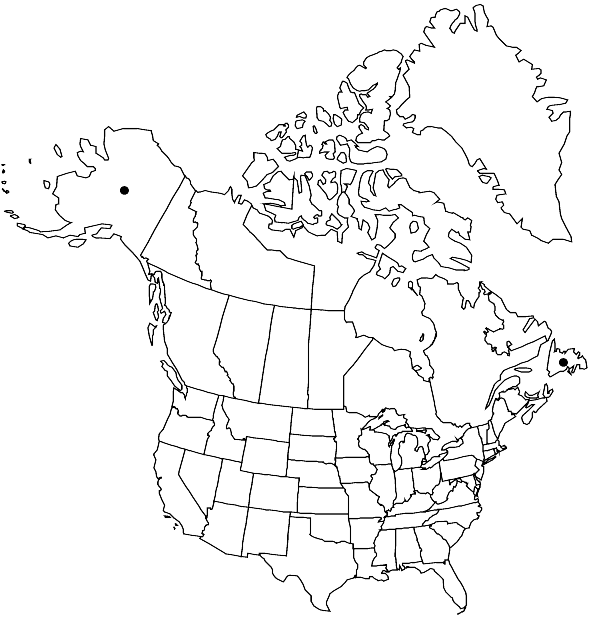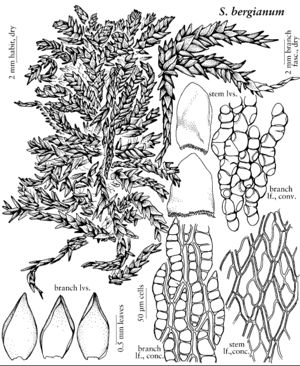Sphagnum bergianum
Sida 22: 964, figs. 14–20. 2006,.
Plants moderate-sized to robust, capitulum more or less flattopped and large; dark-brown overall with a golden center to the capitulum and a distinctive deep red tinge in the field which becomes a pinkish purple sheen upon drying. Stems dark-brown; superficial cortical cells aporose. Stem-leaves broadly triangular-lingulate, 1.15–1.25 × 0.8 mm, apex slightly to broadly obtuse, border moderately broadened at base; hyaline cells mostly 1-septate with a few-to-many 2-septate in the mid region, shape rhomboid. Branches more or less 5-ranked. Branch fascicles with 2 spreading and 1 hanging branch. Branch leaves 1.2–1.3 × 0.65–0.75 mm, broadly ovate, apex involute; hyaline cells on convex surface with numerous round to elliptic pores along the commissures, these grading from small pores at the apex to large pores at the base; concave surface aporose except for a few large pores in the lower side regions. Sexual condition dioicous. Spores 26–30 µm.
Habitat: Hummocks in fens
Elevation: low to moderate elevations
Distribution

Nfld. and Labr. (Nfld.), Alaska.
Discussion
Sphagnum bergianum forms dense hummocks in medium to rich fen habitats and is associated with such species as Sphagnum warnstorfii, S. subfulvum, S. subsecundum, S. platyphyllum and S. fuscum.
Sphagnum bergianum is quite distinct in the field from its very dark brown color tinged with a deep red as well as its 5-ranked branch leaves. Sphagnum subnitens is colored a light brown and red combination, and has unranked branch leaves. Sphagnum subfulvum has a golden brown color that can be tinged with purple but also has unranked branch leaves. Sphagnum flavicomans is a similar-sized brown species of sect. Acutifolia that overlaps S. bergianum in Newfoundland but it is golden brown, lacks the red tinge and has a longer and narrower branch and stem leaves.
Selected References
None.
Lower Taxa
"usually longer and thicker" is not a number."broad" is not a number.
